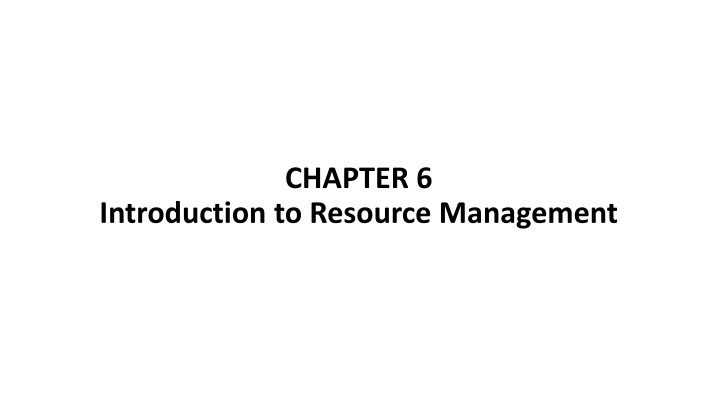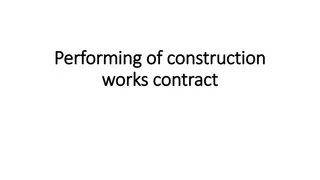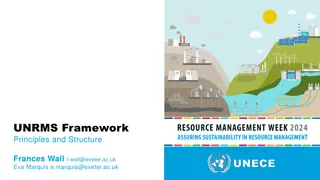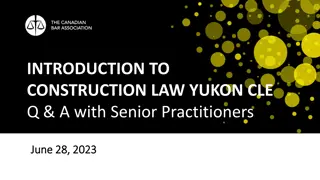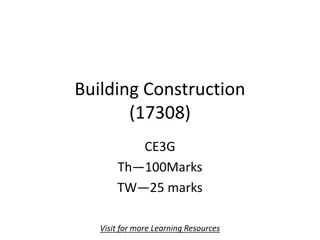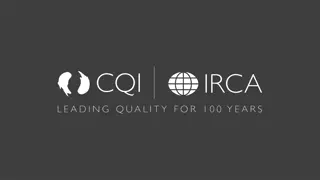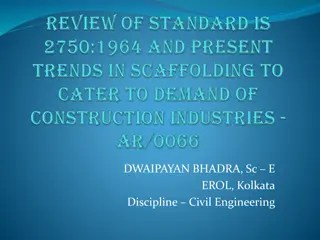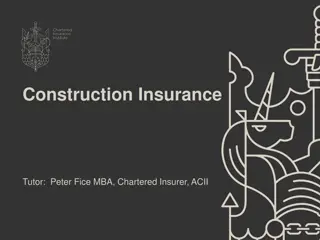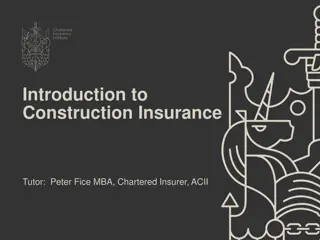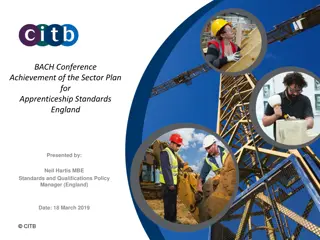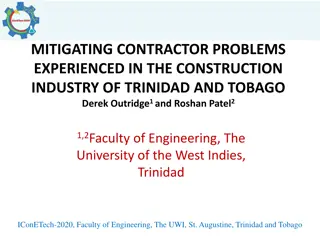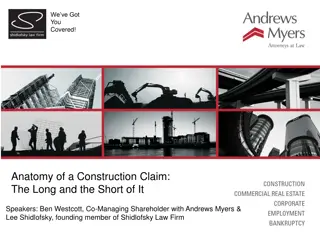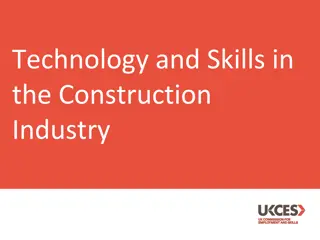Introduction to Resource Management in Construction Industry
The construction industry operates in a dynamic environment with time, money, and resource constraints. This chapter focuses on resource management, optimization methods, and applications in construction. It covers the definition of resources, types of resources, and the importance of optimization in achieving desired benefits. Various applications of optimization in construction, such as designing structural units, maximizing benefits in manufacturing processes, and optimal resource allocation, are explored.
Download Presentation

Please find below an Image/Link to download the presentation.
The content on the website is provided AS IS for your information and personal use only. It may not be sold, licensed, or shared on other websites without obtaining consent from the author.If you encounter any issues during the download, it is possible that the publisher has removed the file from their server.
You are allowed to download the files provided on this website for personal or commercial use, subject to the condition that they are used lawfully. All files are the property of their respective owners.
The content on the website is provided AS IS for your information and personal use only. It may not be sold, licensed, or shared on other websites without obtaining consent from the author.
E N D
Presentation Transcript
CHAPTER 6 Introduction to Resource Management
Objectives To clearly identify resource used in construction industry. To explain ideas behind optimization clearly. Get a broad picture of the various applications of optimization methods. Introduction 2
Introduction The construction industry exists in an environment that is both economically and technologically dynamic. Time, money, and resource constraints, coupled with the high market competition have forced many construction firms to focus more closely on their operations. Introduction
Introduction Resource Definition Resource is any thing that can be used to satisfy construction needs. Types of Resource Introduction
Introduction Introduction
Introduction Optimization : The act of obtaining the best result under the given circumstances. Design, construction and systems involve decision making both at the managerial and the technological level maintenance of engineering Goals of such decisions : to minimize the effort required or to maximize the desired benefit 6
Introduction (contd.) Optimization : Defined as the process of finding the conditions that give the minimum or maximum value of a function, where the function represents the effort required or the desired benefit. 7
Introduction (contd.) Resource optimization is the set of processes and methods to match the available resources (human, machinery, financial) with the needs of the organization in order to achieve established goals.
applications of optimization. Design of structural units in construction, machinery, and in vehicles. Maximizing benefit/minimizing manufacturing and construction processes. Optimal path finding in road networks/freight handling processes. Optimal production planning, controlling and scheduling. Optimal Allocation of resources or services among several activities to maximize the benefit. Transportation problem Agricultural applications Military applications space product costs in various 9
Art of Modeling : Model Building Development of an optimization model can be divided into five major phases. Collection of data Problem definition and formulation Model development Model validation and evaluation or performance Model application and interpretation of results 10
Datacollection Data collection may be time consuming but is the fundamental basis of the model-building process extremely important phase of the model-building process the availability and accuracy of data can have considerable effect on the accuracy of the model evaluate the model. and on the ability to 11
Problem Definition Problem definition and formulation, steps involved: identification of the decision variables; formulation of the model objective(s); the formulation of the model constraints. In performing these steps one must consider the following. Identify the important elements that the problem consists of. Determine the number of independent variables, the number of equations required to describe the system, and the number of unknown parameters. 12
Model development Model development includes: the mathematical description, parameter estimation, input development, and software development The model development phase is an iterative require returning to the model definition and formulation phase. process that may 13
Model Validation and Evaluation This phase is checking the model as a whole. Model validation consists of validation of the assumptions and parameters of the model. Sensitivity analysis to test the model inputs and parameters. This phase also is an iterative process and may require returning to the model definition and formulation phase. One important aspect of this process is that in most cases data used in the formulation process should be different from that used in validation. 14
Modeling Techniques modeling techniques requirement of different type of optimization problems. Major categories of modeling approaches are: classical optimization techniques, linear programming, nonlinear programming, geometric programming, dynamic programming, integer programming, stochastic programming, evolutionary algorithms, etc. Linear programming will be discussed in the subsequent lectures. Different are developed to meet the 15
